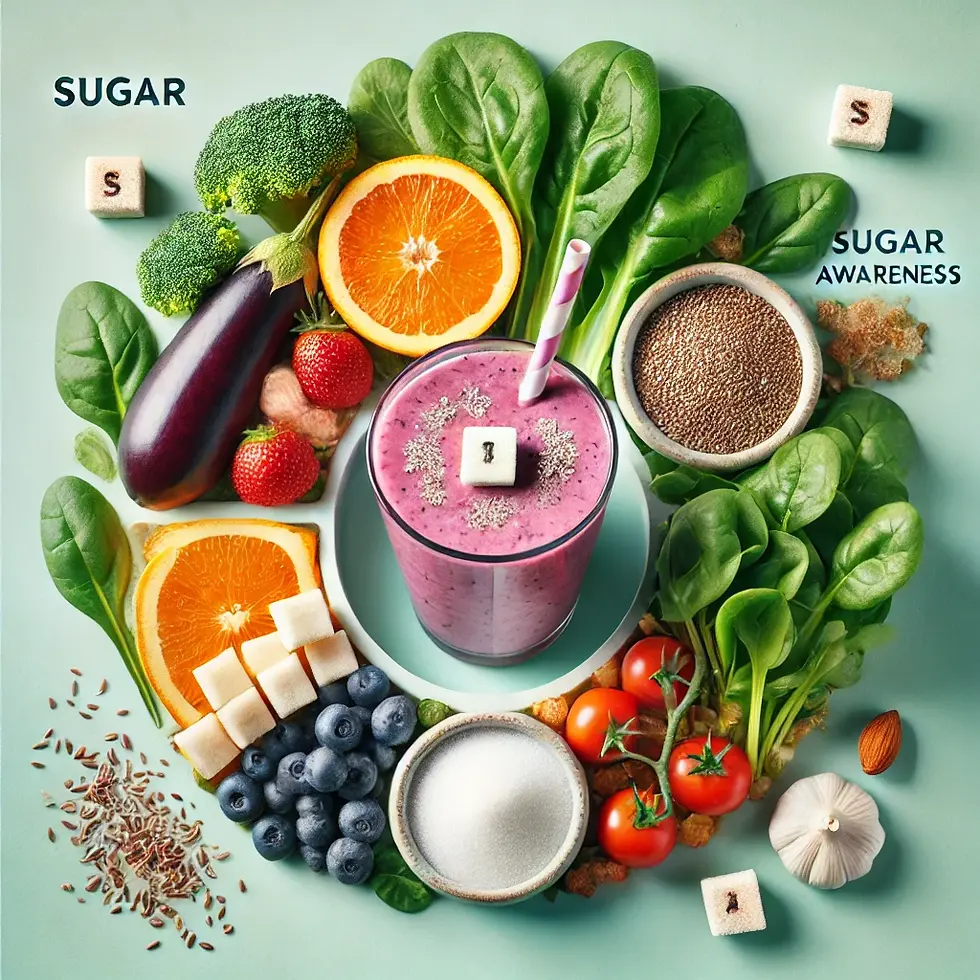Fruit Showdown: Juice or whole?
- Rachael Camp (ANutr, RD)

- Jul 23, 2024
- 2 min read
Updated: May 5

Smoothies: A Sweet Way to Boost Nutrition, But Are You Getting Too Much Sugar?
Smoothies have become a popular go-to for people seeking a convenient, tasty way to increase their fruit and vegetable intake. And let’s face it they are an easy way to pack in nutrients that might otherwise be missing from your diet. However, it’s natural to be concerned about the sugar content in smoothies, especially when aiming for a balanced, health-conscious lifestyle.
The Pros: A Nutrient-Packed Powerhouse
If drinking a smoothie every day helps you increase your intake of fruits and vegetables, you’re already taking a great step toward improving your nutrition. Fruits and vegetables are packed with essential vitamins, minerals, and antioxidants, and when combined in a smoothie, they create a delicious and easily digestible meal or snack.
Smoothies offer a level of convenience that makes it easier to meet your daily nutritional needs, especially in a busy lifestyle. They can be customised with various ingredients to suit your taste and health goals whether you’re adding leafy greens for extra fiber or seeds for a boost of healthy fats.
The Sugar Factor: Are You Getting More Than You Think?
While smoothies have clear benefits, there’s a catch: blending fruits can lead to a higher sugar intake than if you were to eat the fruits whole. When fruits are blended, the natural fiber that slows down sugar absorption is broken down, which can cause a faster spike in blood sugar levels.
This is especially important for individuals managing conditions like diabetes or those looking to keep their blood sugar levels in check. Drinking a large smoothie packed with multiple fruits may seem healthy, but it could mean consuming much more sugar than you realise.
How to Enjoy Smoothies Without the Sugar Spike
The good news is you don’t have to give up your smoothie habit. It’s all about portion control and balance. One way to manage sugar intake is by keeping your smoothie serving size to around 150ml. This amount allows you to enjoy the benefits of fruits and vegetables without overloading on sugar.
You can also balance your smoothie by adding ingredients that help slow down sugar absorption. Healthy fats like avocado, flaxseeds, or nuts, along with protein sources such as Greek yogurt or silken tofu, can make a big difference. These additions create a more balanced smoothie that keeps you full longer and helps prevent rapid blood sugar spikes.
Striking the Right Balance for You
Ultimately, whether you prefer eating your fruits and veggies whole or blended into a smoothie is up to you. Both options have their benefits, and it’s all about striking a balance that aligns with your personal health goals. If you’re mindful of portion sizes and ingredients, smoothies can remain a valuable part of your diet while keeping sugar intake in check.



Comments